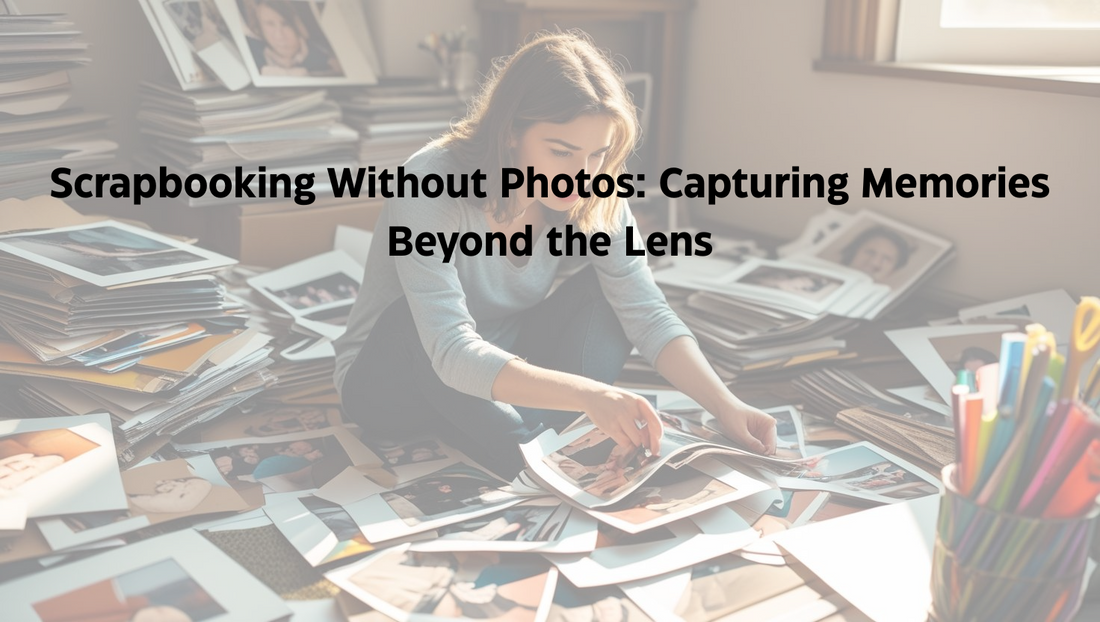
Scrapbooking Without Photos: Capturing Memories Beyond the Lens
Share
Scrapbooking is all about preserving memories, and while photos are often the star of the show, they're not the only way to tell a story. Some of our most vivid memories exist solely in our minds – a feeling, a smell, a conversation, or a significant event that simply wasn't photographed. These memories are just as valuable and deserve a place in your scrapbooks.
So, how do you do it? Here are some creative ways to bring those un-photographed memories to life on the page:
1. Focus on the Story
This is the most crucial element when you don't have pictures. Write down everything you remember about the event.
-
Sensory Details: What did you see, hear, smell, taste, and feel? Was there a particular song playing? The scent of fresh-baked cookies? The warmth of the sun on your skin?
-
Emotions: How did this memory make you feel? Joyful, peaceful, excited, nostalgic?
-
Dialogue: Do you remember any specific conversations or significant phrases?
-
The "Why": Why is this memory important to you? What impact did it have?
Don't just write a short caption. Dedicate a significant portion of your layout to journaling. You can handwrite it, print it out, or even type it on an old-fashioned typewriter for a unique look.
2. Use Evocative Embellishments
Since you don't have photos to guide your embellishment choices, think about objects and themes that represent the memory.
-
Colors and Patterns: Did the memory have a dominant color scheme? A sunny yellow for a beach trip, soft blues for a peaceful moment, or vibrant reds for an exciting event? Use papers and embellishments in those colors.
-
Thematic Elements: If it was a trip to the fair, use carnival-themed stickers or ephemera. If it was a cozy night in, use elements like tiny teacups, books, or soft textures.
-
Tickets, Maps, and Ephemera: Did you keep any physical mementos? A concert ticket stub, a dried flower, a wrapper from a favorite treat, a bus ticket, or a map of a place you visited can be incredibly powerful visual anchors for a memory.
-
Textures: Think about the textures associated with the memory. Fuzzy chenille for a favorite blanket, rough burlap for an outdoor adventure, or smooth vellum for a delicate feeling.
3. Incorporate Found Objects
Sometimes, the best "visuals" aren't traditional photos at all.
-
Drawings or Doodles: If you're artistically inclined (or even if you're not!), sketch a simple representation of the memory. A stick figure drawing can convey just as much emotion as a masterpiece.
-
Stamps and Stencils: Use stamps or stencils to create repeating patterns or symbolic images that relate to your memory.
-
Words as Art: Turn your journaling into a design element. Use different fonts, sizes, and colors to emphasize certain words or phrases. You can even create a word cloud of key terms from your memory.
4. Create a "Mood Board" Layout
Instead of a traditional photo-centric layout, create a page that captures the essence or mood of the memory.
-
Collage: Layer different papers, textures, and small embellishments to create a rich visual tapestry that reflects the feeling of the memory.
-
Color Blocking: Use large blocks of color to convey emotions or settings.
-
Abstract Elements: Don't be afraid to use abstract shapes or designs that evoke the memory rather than literally depicting it.
Scrapbooking without photos can be an incredibly liberating experience. It pushes you to be more creative with your storytelling and focus on the deeper meaning of your memories. So, dig into those cherished un-photographed moments, grab your supplies, and start creating!
What's a memory you've always wanted to scrapbook but thought you couldn't because you don't have pictures? Share in the comments below!
